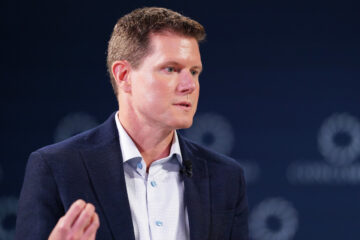If there’s one key data point many CEOs and data wonks take seriously above all else, it’s typically monthly inflation numbers.
The most recent numbers for the Consumer Price Index (CPI) show that prices in May ticked up 0.3% from April. The CPI increased 3.3% on a 12-month basis, about 0.1% less than expectations, indicating that inflation may soon be cooling.
Related: Carnival Cruise Line shares a key health and wellness warning
This sounds like a good thing, and indeed, any indication that prices may finally be stabilizing is welcome news after years of stubbornly high prices everywhere from the gas pump to the grocery store.
We’ll get a better idea how prices looked last month, when June CPI numbers come out a little later this month. But the most recent data indicates that consumers have been paying more for many goods and services as recently as May.
Here’s a look at how the price of several key goods and services changed from April to May:
Food: steadyFood at home: increase 0.1%Energy: decrease 2.0%New vehicles: decrease 0.5%Used vehicles: increase 0.6%Apparel: decrease 0.3%Medical care commodities: increase 1.3%Shelter: increase 0.4%Transportation services: decrease 0.5%Medical care services: increase 0.3%
It’s understandable why so many people watch these reports as close as they do. CEOs of public companies, for example, tend to refer to persistently high prices as blights to the bottom line, or even the reason why some customers might shy away from buying certain products altogether. Especially if you’re in the consumer discretionary business.
Customers shop at a Home Depot store in Miami, Florida.
High CPI numbers are complicated
The most recent data indicates Americans are paying more for many staples, such as groceries and shelter.
“The index for shelter rose in April, as did the index for gasoline. Combined, these two indexes contributed over 70% of the monthly increase in the index for all items,” the CPI says.
Shelter is the CPI’s benchmark for measuring housing costs and its relationship with inflation. It’s based more on rent prices, but an increase in rent typically correlates closely to a rise in housing costs across the board.
Related: Amazon considering price hike for a very popular service
Despite that data, some insist the economy is on its way to recovering, with a record number of people traveling this summer and a renewed vigor for home building across the United States.
“My Administration has cut red tape so home builders can get federal financing, which has supported a record number of new homes under construction across the country,” President Joe Biden tweeted in July. “Now Congress must pass my plan to build an additional 2 million affordable homes and bring rents down.”
My Administration has cut red tape so home builders can get federal financing, which has supported a record number of new homes under construction across the country.
Now Congress must pass my plan to build an additional 2 million affordable homes and bring rents down.
— President Biden (@POTUS) July 6, 2024
Home Depot CEO skeptical about key data point
Not everyone is buying that talking point, however.
Former Home Depot (HD) CEO Bob Nardelli said during an interview in early July that too much government intervention may actually be a bad thing — and a good way to skew the numbers.
Related: Former Home Depot CEO issues stark warning about the economy
“Inflation is like carbon monoxide. It’s the silent killer that’s creating job problems in the quality of life. It is pervasive. People are still using dynamic pricing,” he said, adding, “we’re continuing to suffer under reckless spending. It’s causing these problems in our economy. It’s stressing the fault lines in our economy. And whoever gets in that white House next year is going to be hit with a wrecking ball to try and pull this back.”
Nardelli added that the most recent June jobs report, which saw the U.S. add 206,000 new jobs, is “deceptive,” since many of those jobs are government roles.
More Retail:
Ulta CEO sounds the alarm on a growing problemLululemon releases a first-of-its-kind productTarget store introduces a new ‘over 18’ policyAmazon launches genius new subscription product
“The second-largest employer last year was the government. And they’re back on the same track again this year. There is no GDP generated by government jobs,” he said.
Nardelli pointed out that adding jobs looks like a great way to point to a thriving economy, but in reality it’s “deceptively correct,” and not as “bright or rosy” as it seems at face value.
Biden, for his part, boasted on Twitter that he’s added, “a record 15.7 million jobs created during my Administration,” following the report.
Related: Veteran fund manager picks favorite stocks for 2024


